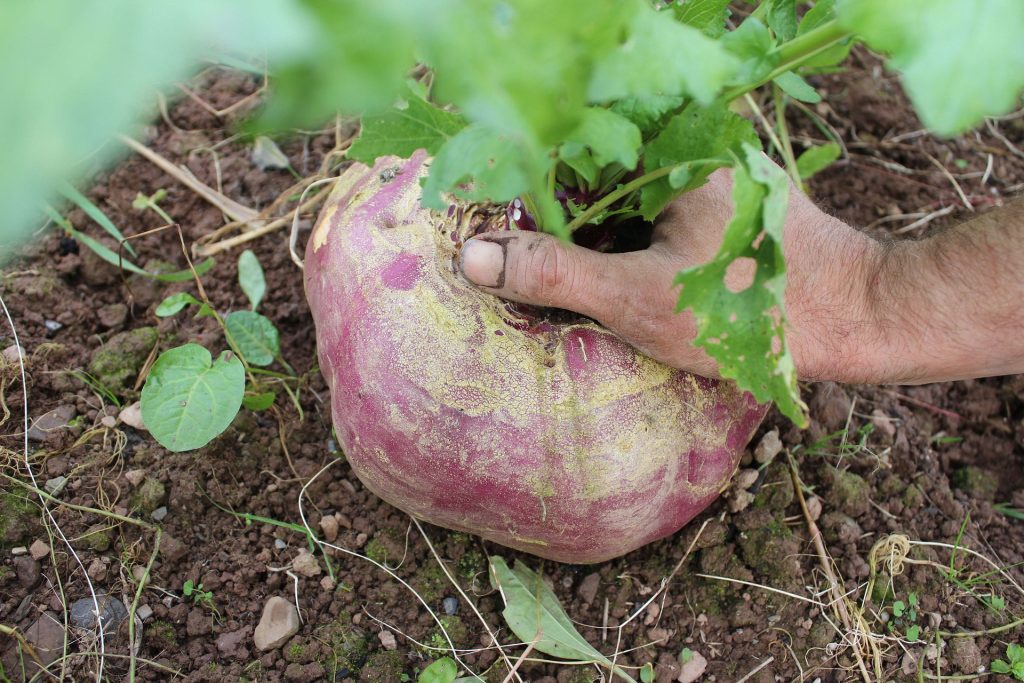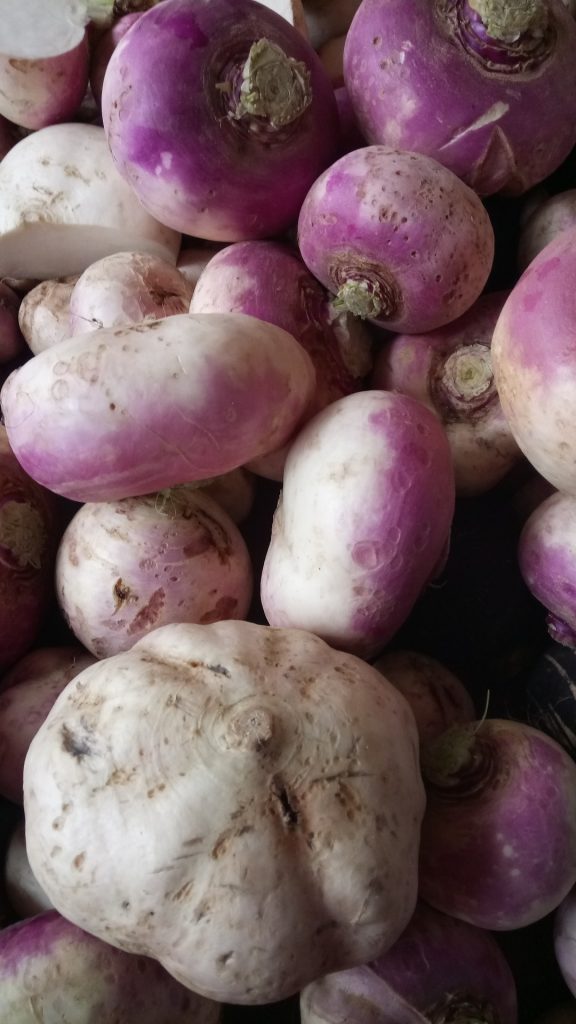Growing Turnips
Turnips (Brassica campestris) belong to the brassica family, along with broccoli, cauliflower and cabbages, and are closely related to swedes and daikons. They are easy to grow and easily recognisable, with white swollen roots, often with a purple crown.
Site and soil
Turnips tolerate poor soil, but will do better in richer soil. Soil that is well turned and composted will also reduce the likelihood of woodiness.

Planting
Turnips are easy to grow in the right season. They can be grown in spring and summer, but prefer cool weather. A February-March planting is perfect for a winter harvest. Direct sow in rows about 30cm apart, at a depth of about 3 times the diameter of the seed.
Cultivating
Not much cultivation is needed. The seeds germinate in about a week and seedlings should be thinned to about 10cm apart after a fortnight.
Keep water up to the root to prevent woodiness, remembering that the leaves may not be a good indicator of dry conditions below the soil.
Harvesting
Turnip tops can be harvested once they reach 10-15cm. As long as the growing point isn’t removed, the tops will continue to grow.
Start to harvest the roots when they reach the size of a golf ball or radish. If left to tennis ball size, they will become woody and tough and will start to lose flavour. Maturity is generally reached at about 8 weeks.
Some gardeners leave the crop in the ground and harvest as needed through winter, but it is important to ensure that the roots don’t become too large.

Problems
Because they grow and are harvested so quickly, pests are not a major problem. They can be bothered by slugs, snails and aphids and pests that attack other brassicas may be attracted to the foliage.